[HCI] L2-1. Introduction to Design Principles
Focusing on the task
Interface Design

-
Interaction between ‘user’ and ‘task’ through ‘interface’
-
GOOD interface 디자인이란?
-
interface 그 자체보다 다음의 2가지를 잘 이해해야 한다!
-
users의 목표(goal)
-
그들이 달성하려고 하는 task
-
-

- Thermostat vs. Nest
- Interface에만 집중하면 iterative improvement에 그칠 수 있다
- 온도를 측정한다
- task에 집중하면 revolutionary design이 나올 수 있다
- 온도를 측정한다 -> Why? -> 온도를 유지한다
- Interface에만 집중하면 iterative improvement에 그칠 수 있다
- What is ‘Nest’?
5 Tips: Identify a Task
-
Watch real users
- instead of just speculating or brainstorming, watch real users performing
-
Talk to them!
- while performing the task, talk to them
- Find out what they’re thinking, what their goals, what their motives are
-
Start small
- Start by looking at the individual little interactions
- Be careful to interpret everything in terms of what you already believe.
-
Abstract up
-
small observation -> abstract up to understanding of the tasks they’re trying to complete
-
Ask Why they’re performing these actions until you get beyond the scope of your design
-
-
You are not your user
- You’re not designing for you but designing for everyone that performs that tasks
The role of the user: Processor? Predictor? Participant?
1. Processor
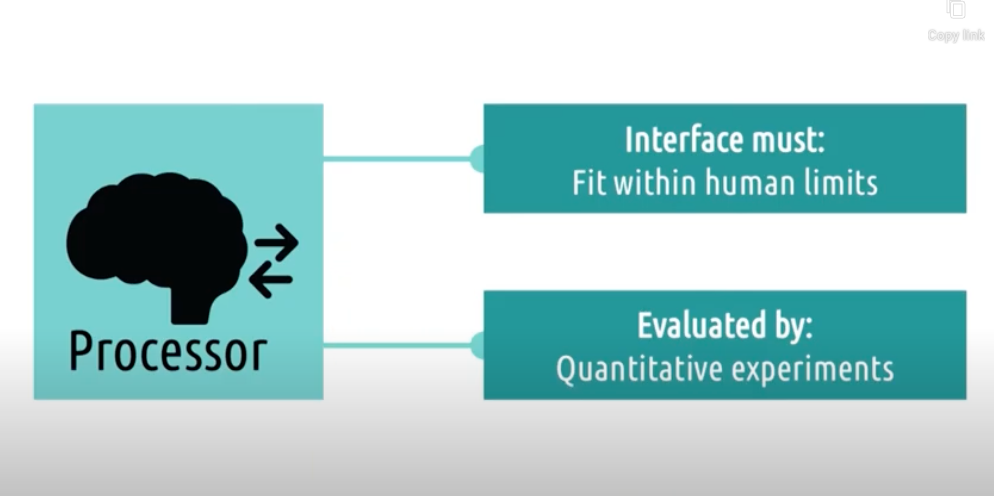
2. Predictor
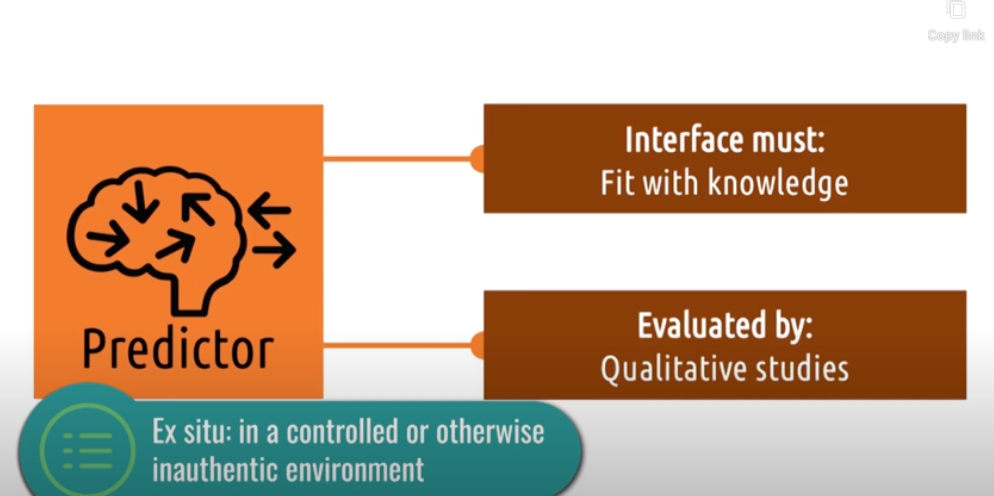
3. Participant
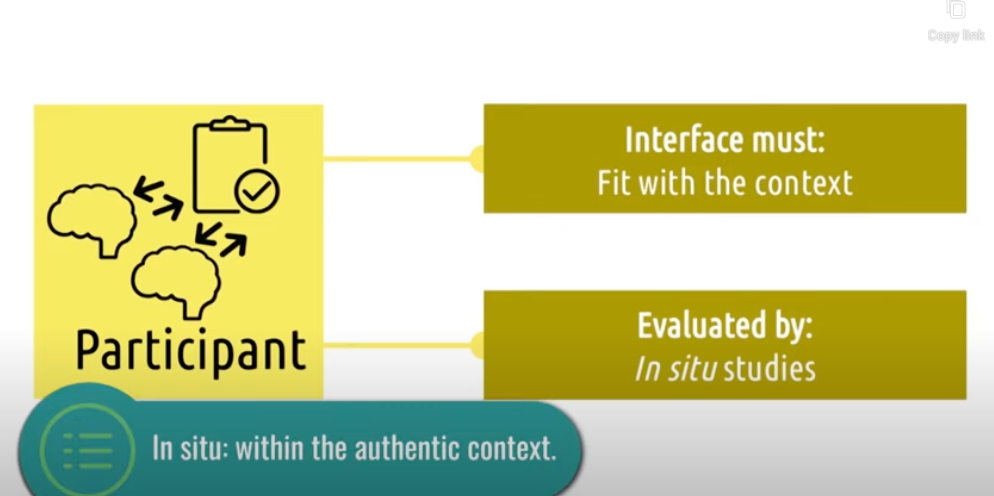
Views of the User and Psychological Schools of Thought
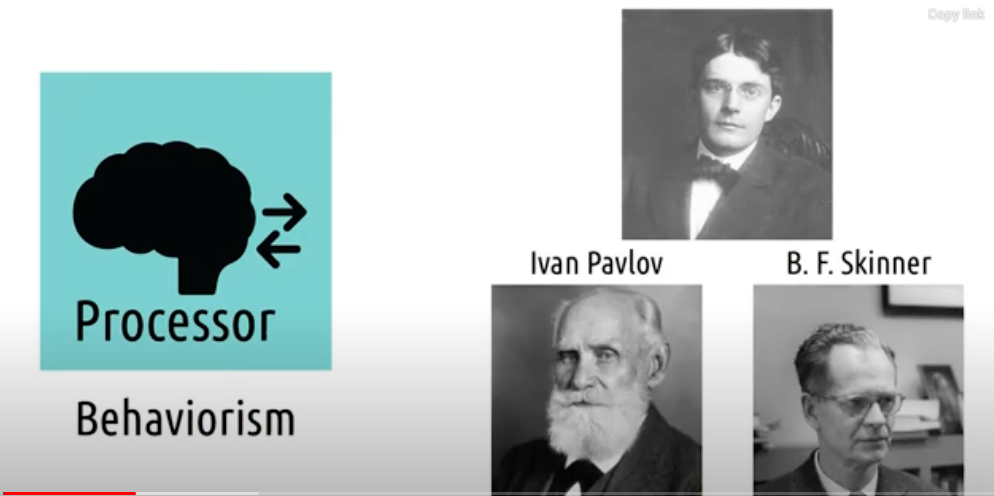
- Focus only on observable behaviors and outcomes
- not at the cognition that underlies behavior
- “What design create the right behavior without paying a whole lot of attention as to why”
- Design Process = focus on testing observable behaviors
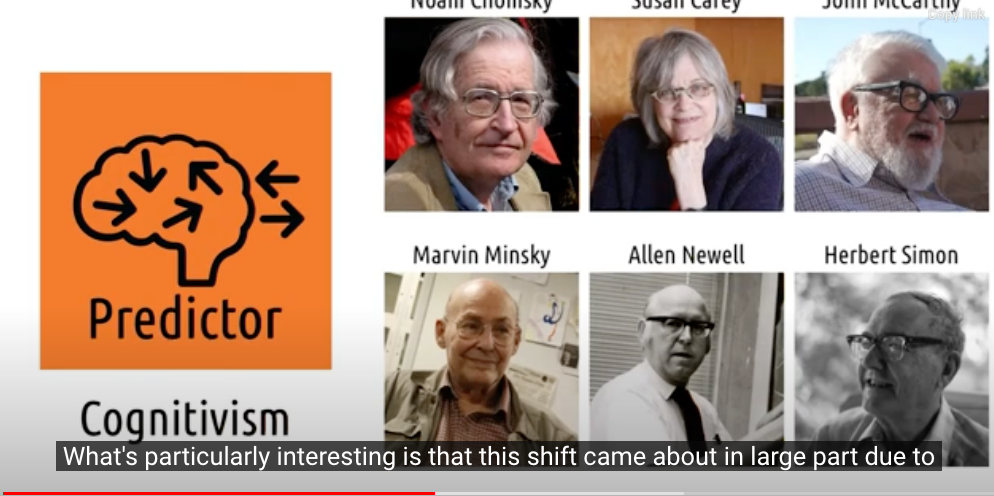
- Linguistics / Psychology / Computer Science 와 관련됨
- AI = computers that could think like humans
- understand how a human thought
- Focus on what the user is thinking(predicting)
- What do they predict the outcome of that action will be?
- What do they predict is the right action to take?
- Design Process = get inside the user’s head and understand how they predict the interface will behave
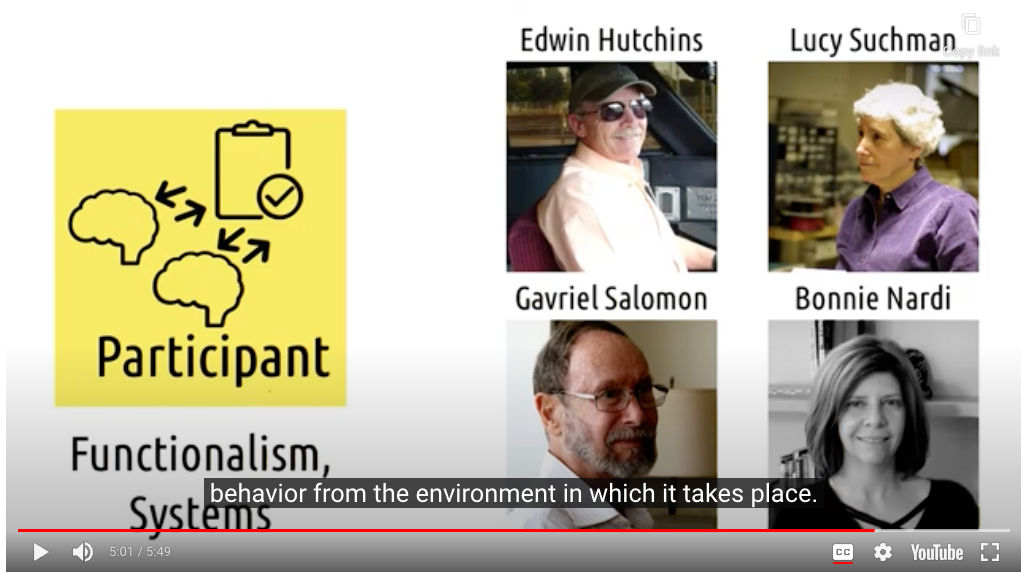
- interaction with some users and some interface
- interaction of both within the context of a larger system
- cares about the environment in which the user and the interface are situated
-
{ ( User + Interface ) = Participants } within larger complex cognitive system
- Distributed Cognitions
Comparison for 3 Views of Users
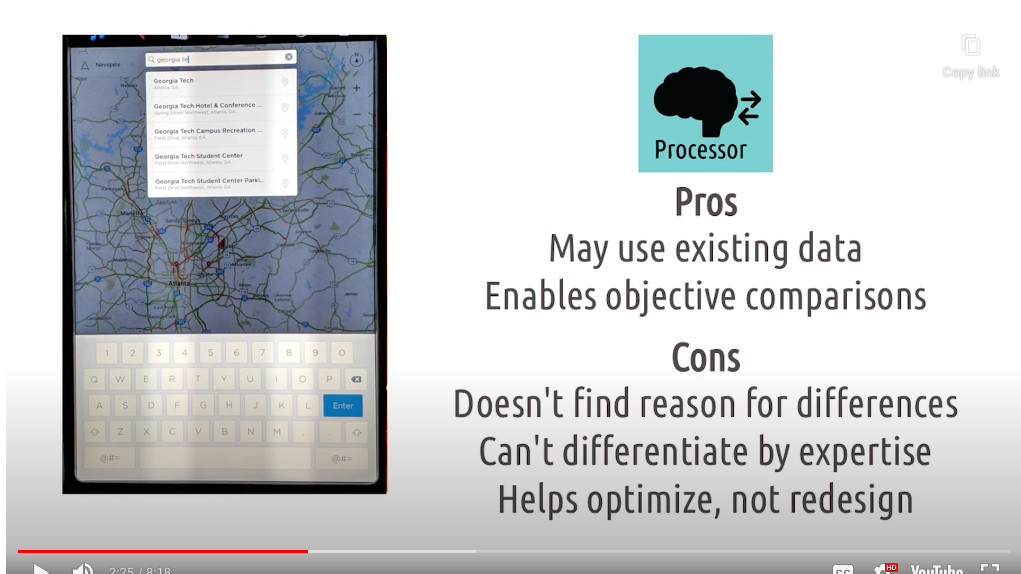

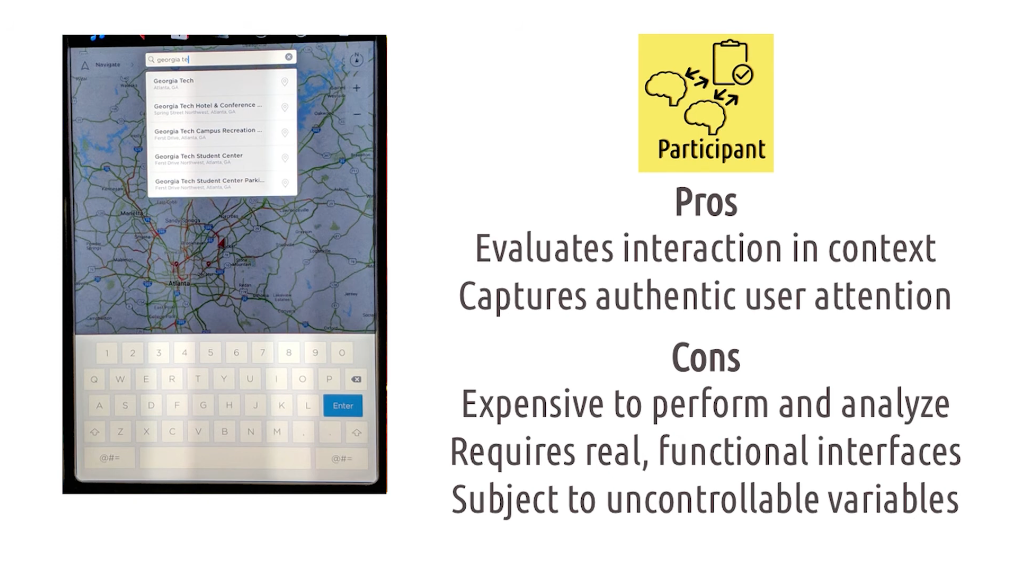
Recap
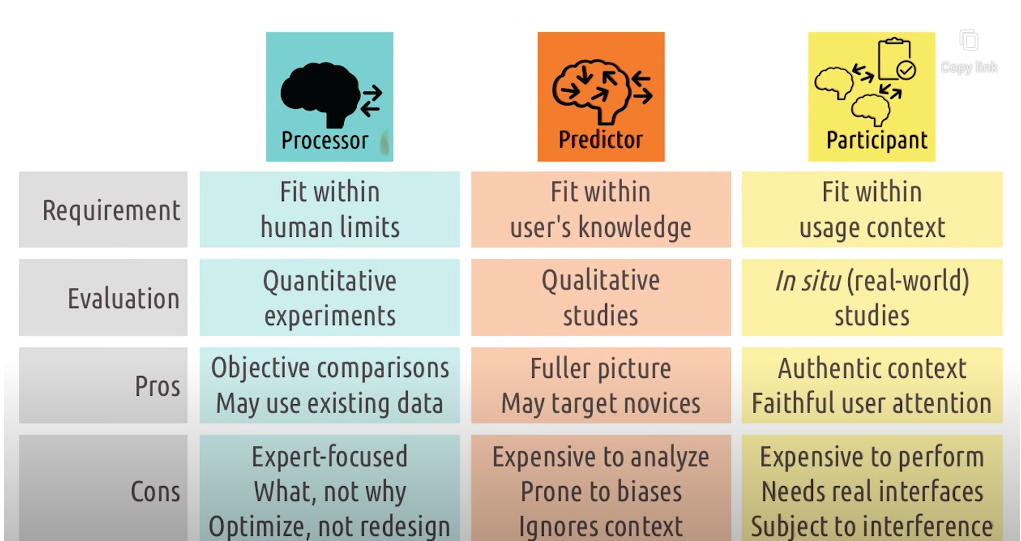
- 3가지 관점은 상호보완적
- Processor Model : 초보 사용자가 어떤 생각을 하는지 별로 insight를 주지 못함
- Predictor Model : 초보 사용자를 타겟팅하는데 적합함
- Predictor Model : 실제 객관적인 비교를 수행하기는 힘듦
- Processor Model : 객관적인 비교에 유용
- 둘 다, 해당 product가 사용되는 context를 고려하지 못함
- Participant Model : 실제 사용되는 여러 상황의 context를 고려할 수 있음
- Participant Model : Usability에 영향을 미치는 여러 요소를 고립시켜 확인할 수 없음
- Processor Model : 여러 변수들을 통제하는데 매우 효과적
- Participant Model : Usability에 영향을 미치는 여러 요소를 고립시켜 확인할 수 없음
- 예시) nevigation system
- Participant Model : 사용자들이 비슷한 몇개의 위치를 찾는데 많은 시간을 소비한다는 것을 발견
- book-marking system을 redesign하기로 결정
- Predictor Model : book-marking system에 대한 prototype을 사용해보게 하며 user들의 인터뷰를 수집
- 긴 길이의 북마크 필요 없음을 발견. 집과 직장이면 충분
- Processor Model : 해당 interface가 얼마나 효율적으로 user을 목적지까지 데려다주는지 실험
- Participant Model : 사용자들이 비슷한 몇개의 위치를 찾는데 많은 시간을 소비한다는 것을 발견
User experience at multiple level
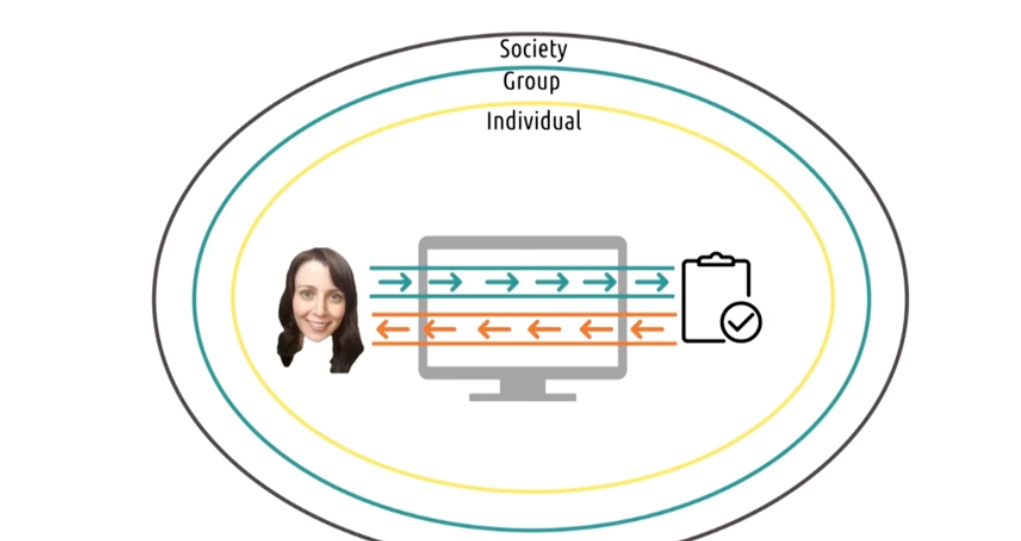
- UX는 개인 차원 -> 집단 차원 -> 사회 차원으로 확장하며 여러 경험을 제공한다
- 개인 차원 : Health tracking App
- 집단 차원 : Social Network Service
- 사회 차원 : 인터넷 국민 신문
Design Challenge

- 길을 걸으며 non-fiction audio book 듣는 것을 즐기는 사람
RQ: 편하게 메모를 하고, book-marking를 하는 등 책을 읽으면서 하는 작업들을 어떻게 위 환경에서 구현할 수 있을까?
- Design with the 3 view
- Processor : 오디오북 스피드 컨트롤 기능을 넣을 수 있다. 메모를 하고 북마킹을 하려면 정보를 처리하는 시간이 필요하므로 너무 빨리 읽는 것이 좋지 않을 것 같다.
- Predictor : ‘말’로 메모와 북마킹을 할 수 있어야 할 것이다. 듣다가 꼭 기억하고 싶은 부분이나 떠오르는 생각이 있으면 잠깐 오디오북을 멈춰달라고 말한 후, 방금 전 읽은 부분을 북마크에 저장해 달라고 하거나, 지금부터 말한 내용을 메모에 적어달라고 요청할 수 있으면 좋을 것 같다. (in-voice memo, book-marking system + AI assiatant to recognize user’s utterance)
- Participant : 내가 한 북마크를 다른 사람과 공유할 수 있는 기능을 넣을 수 있다. 내가 이 책에서 좋아하는 부분, 인상 깊었던 부분을 다른 사람과 나눌 수 있는 것도 좋다. 이를 위해 북마크한 내용을 SNS나 reddit 같은 community (오디오북 헤비 유저 커뮤니티…?)에 쉽게 공유할 수 있는 기능을 제공하면 더 좋을 것 같다.
-
User experince in 3 level
-
Indivisual : 오디오북 스피드 컨트롤 기능, verbal control 메모-북마킹 기능은 개인의 사용성을 높일 것이다. 이는 개인 수준의 사용자 경험 향상으로 이어진다.
- Group : 공유한 북마크를 통해 다른사람과 소통하고 서로 의견을 나누는 것은 Group 차원의 UX를 높일 것이다. 또한 다른 사람이 공유한 내용을 보며 user도 해당 도서에 대해 더 깊은 이해를 할 수 있을 것이다. 이는 집단 차원의 사용자 경험 향상으로 이어진다.
- Society : 서로 다른 언어의 글을 실시간 번역해서 TTS를 통해 들려주면 개인이 더 다양한 책을 읽는 데 도움을 줄 수 있다. 또한 시각장애인에게도 쉽게 책을 읽을 수 있게 하여 boundary를 낮춰주는 효과도 있다. 이는 더 연결되고 평등한 사회를 만들며 사회 차원의 사용자 경험 향상으로 이어진다.
-
- ETC
- Additionally, the design choices made in terms of privacy and data security can also impact society. Ensuring that user data is handled responsibly and transparently can build trust and protect user privacy, contributing to a positive societal impact.
- By considering the individual, group, and societal aspects of user experience, you can design an audio book bookmarking system that not only meets the needs of individual users but also fosters collaboration, inclusivity, and positive societal impact.